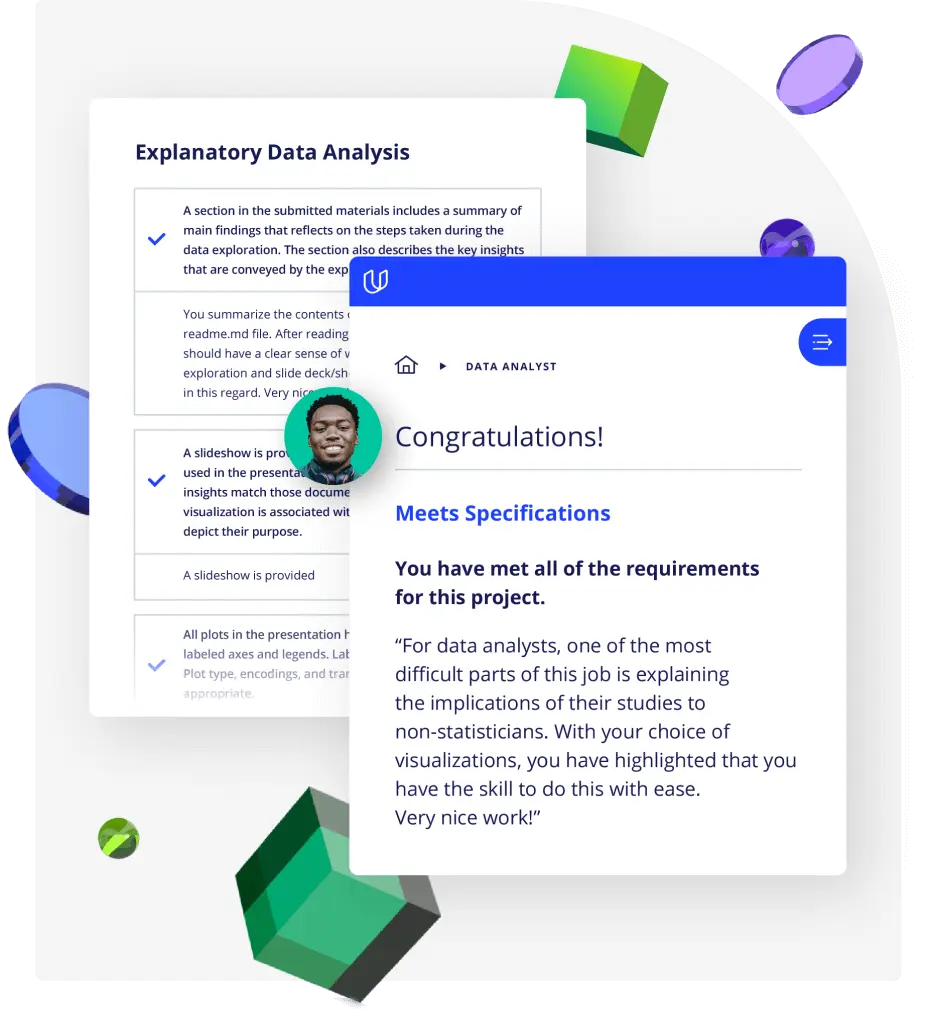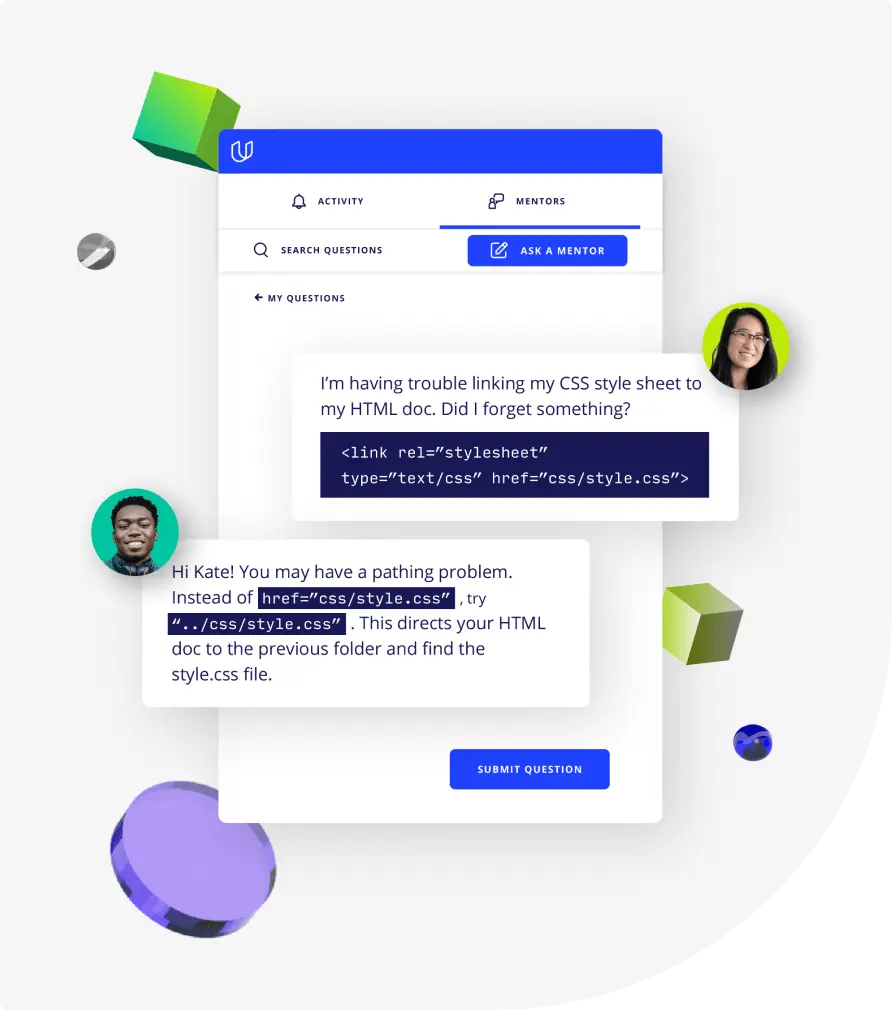Lesson 1
Welcome!
Welcome to Udacity. Takes 5 minutes to get familiar with Udacity courses and gain some tips to succeed in courses.

Nanodegree Program
In this program, you will dive into the world of Digital Arts, specifically focusing on raster design, branding, and web design. Through hands-on activities and practical projects, you will develop the skills to create and manipulate images using pixels, explore the art of branding through visually compelling graphics, and master the essentials of web design.
In this program, you will dive into the world of Digital Arts, specifically focusing on raster design, branding, and web design. Through hands-on activities and practical projects, you will develop the skills to create and manipulate images using pixels, explore the art of branding through visually compelling graphics, and master the essentials of web design.
Beginner
4 weeks
Real-world Projects
Completion Certificate
Last Updated June 8, 2024
Skills you'll learn:
Prerequisites:
Course 1 • 45 minutes
Welcome to Udacity! We're excited to share more about your Nanodegree program and start this journey with you!
Lesson 1
Welcome to Udacity. Takes 5 minutes to get familiar with Udacity courses and gain some tips to succeed in courses.
Lesson 2
You are starting a challenging but rewarding journey! Take 5 minutes to read how to get help with projects and content.
Course 2 • 8 hours
Welcome to the digital arts! This lesson delves into raster design, covering pixels, color spaces, and photo-editing software like Photopea. It explores technical aspects including file types, compression, and metadata. Emphasizing transferable skills and industry standards, it covers toolbar basics, importing, resizing, and common tools. Layers are fundamental, including adjustment and content layers, with a focus on organization and blend modes for style.
Lesson 1
Welcome to the digital arts world! From billboards to mobile ads, photography and pixel-based designs dominate. This lesson explores raster design, pixels, colors spaces and photo-editing software!
Lesson 2
This lesson covers technical aspects of image editing; it delves into raster-based design, file types, compression methods and metadata.
Lesson 3
This lesson introduces raster editing with Photopea. It emphasizes transferable skills and industry standards like .psd files. We cover the toolbar basics, importing, resizing and common tools.
Lesson 4
Layers are fundamental in design. There are adjustment and content layers. We will examine both and also look at blend modes for style and nuance. Additionally we cover organization and hierarchy.
Course 3 • 8 hours
These lessons cover Masking in raster design, exploring composite designs and pixel selection tools. Discover the power of vector tools, focusing on the pen tool and text manipulation. Learn about filters, their application with layers, and non-destructive editing. Explore branding and visual identity, understanding their impact and creation process, including design-thinking methodology and logo development.
Lesson 1
Masking in raster design. Explore composite designs using layers and masking and understanding pixel selection tools. Using advanced features like clipping masks for nuanced compositions.
Lesson 2
In this lesson discover the power of vector tools within raster design software. We will look specifically at the pen tool and its anchor points as well as the power of text in vector design.
Lesson 3
We cover the power of filters. We look at different types and how to apply them. We examine how they work in conjunction with layers, blend modes and non-destructive editing using smart objects.
Lesson 4
The lesson covers branding and visual identity. We explore the impact of branding and the creation process, diving into design-thinking methodology and logo development.
Course 4 • 6 hours
Explore web design basics with Figma, focusing on UX/UI principles, wireframing, mood boards, and design thinking. Learn image integration best practices and refine wireframes from low to high fidelity. Dive into prototyping in Figma, applying UX/UI principles to create usable interactions. Develop a multi-page website.
Lesson 1
Learn web design basics using Figma, we will focus on UX/UI principles and explore wireframing, moodboards and design thinking for effective solutions.
Lesson 2
This lesson covers integrating images into web designs using best practices for choice and placement and refining wireframes from low to high fidelity.
Lesson 3
We will cover further refinement of wireframes - introducing the prototype phase in Figma, creating usable interactions with UX/UI principles.

Visual Communications Professor at California State University San Francisco
Joshua Wilder Oakley is currently a Visual Communications Professor at California State University San Francisco and has also taught at the University of San Francisco. His teaching philosophy mirrors his design philosophy - make the world a better place through good design and visual problem solving. In addition to teaching, Oakley is also a Freelance Graphic Designer and Photographer.
Combine technology training for employees with industry experts, mentors, and projects, for critical thinking that pushes innovation. Our proven upskilling system goes after success—relentlessly.

Demonstrate proficiency with practical projects
Projects are based on real-world scenarios and challenges, allowing you to apply the skills you learn to practical situations, while giving you real hands-on experience.
Gain proven experience
Retain knowledge longer
Apply new skills immediately

Top-tier services to ensure learner success
Reviewers provide timely and constructive feedback on your project submissions, highlighting areas of improvement and offering practical tips to enhance your work.
Get help from subject matter experts
Learn industry best practices
Gain valuable insights and improve your skills

Unlimited access to our top-rated courses
Real-world projects
Personalized project reviews
Program certificates
Proven career outcomes
Full Catalog Access
One subscription opens up this course and our entire catalog of projects and skills.
Average time to complete a Nanodegree program
4 weeks
, Beginner
8 hours
, Beginner
4 weeks
, Beginner
8 hours
, Beginner
(672)
2 months
, Beginner
4 weeks
, Beginner
6 hours
, Beginner
8 hours
, Beginner
8 hours
, Beginner
(449)
4 months
, Intermediate
4 weeks
, Advanced
4 weeks
, Intermediate
4 weeks
, Beginner
8 hours
, Beginner
9 hours
, Fluency
8 hours
, Beginner

Photo Editing and Web Design
4 weeks
, Beginner
8 hours
, Beginner
4 weeks
, Beginner
8 hours
, Beginner
(672)
2 months
, Beginner
4 weeks
, Beginner
6 hours
, Beginner
8 hours
, Beginner
8 hours
, Beginner
(449)
4 months
, Intermediate
4 weeks
, Advanced
4 weeks
, Intermediate
4 weeks
, Beginner
8 hours
, Beginner
9 hours
, Fluency
8 hours
, Beginner